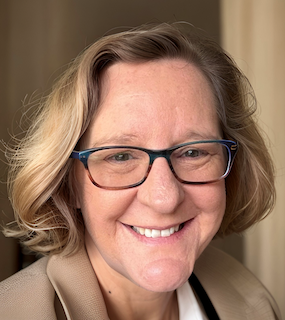One of the magical things about living in a rural place is our geography. We love where we live and have the privilege of being close to nature most of the time. I am really lucky to live in the beautiful coastal town of Port Macquarie, Australia.
We are known for our beaches, bushland, and koalas. We have amazing national parks surrounding us, a river and creeks running through the centre of town, and many signs alerting drivers to look out for wildlife.
Our university campus often has wildlife wandering through it, including kangaroos, koalas, monitor lizards, and occasionally snakes. At my kids’ school one of the first lessons of kindergarten is what to do if there is a kangaroo or snake on the playground (don’t approach it, back slowly away, and get a teacher).
Who wouldn’t want to live here? We have the most beautiful geography in the world.
But our geography is used against us when it comes to being included in health services.
Australia says that it has a universal health care system which includes all Australians (Australian Government Department of Health, 2025), but consistently rural places are considered too far away to expect equitable and sustainable healthcare (Hayes et al., 2025; Hayes et al., 2023). In fact, rural living Australians have been found to receive less government funding per head than people who live in the city resulting in a $6.5 billion deficit in health spending on rural people (National Rural Health Alliance, 2023).
And our geography is usually blamed.

Karen Hayes (OT, PhD cand)
Lecturer, Charles Sturt University, Australia
Karen Hayes is a lecturer in occupational therapy at Charles Sturt University and a researcher in sustainable health workforce and spatial justice in rural places. Her mission is to increase equity of health access in rural places.

Image by Tristan Kouwenhoven from Pixabay
We are often told that we live too far away – and by inference, this means too far from the city.
But who decided cities were the standard? The world’s cities only cover only 1.49% of the global landmass (World Bank, 2015), and account for only half the world’s population (World Health Organization, 2021).
To be fair, it probably is cheaper to provide health care when patients live close together, have good public transport systems, existing hospitals, and health workers that don’t need to travel far to get to them.
But this forgets a really important fact – health care infrastructure is not natural. Humans shape geographies to include health infrastructure (Lefebvre, 1991).
We build places for living, working, recreating, and preserving (Harvey, 2019; Lefebvre, 1991; Soja, 2010). These are social decisions that are made based on a myriad of social and political choices (Harvey, 2019; Lefebvre, 1991; Soja, 2010).
So, decisions to not shape geographies to include rural health care services are human ones – not natural consequences of geography like a mountain or a forest. Society has decided that the cost of providing accessible health care for rural people is too high.
And it is costing us our lives.

Image by Bernhard Jaeck from Pixabay
Rural people in Australia and around the world die younger with more chronic disease than urban people but have less access to health services (World Health Organization, 2021).
So, in our narrative review (Hayes et al., 2025), we suggest that it is time to rethink rural health care and focus on justice rather than cost – spatial justice in fact.
Spatial justice suggests that regardless of where you live, you should have the same opportunities (Soja, 2010), including the opportunity for a long and healthy life.
This does not mean that we think every tiny town should have a huge hospital! Opportunities are different to resources. If a hospital would be unviable, what has been done to ensure fast and effective emergency transport? Has infrastructure been provided to support free and accessible telehealth services?
We are a clever species. Surely, we can come up with some strategies to provide access to high quality healthcare no matter where we live?
But this means approaching the problem differently –we need shape our geography to achieve spatial justice rather than focus just on cost containment.
We suggest shaping rural spaces (Hayes et al., 2025) using Lefebvre’s (1991) three shaping factors:
Conceived space (how space is measured) – measure space not just population numbers, identify place-based needs and address them.
Perceived space (how places are imagined to be) – value rural places equally with urban spaces and assume reciprocity between rural and urban spaces.
Lived space (personal experience of living in a place) – value the knowledge and skills of rural people in knowing their places and community and engage them in designing fit for purpose services.
After all, the only difference between rural and urban healthcare is where it happens – so maybe addressing geography is the way forward.
To read more check out our full article here:
Hayes, K., Coxon, K. & Bye, R.B. (2025). Rural and remote health care: the case for spatial justice. Rural and Remote Health. https://doi.org/10.22605/rrh8580
References
Header image by Pexels from Pixabay
Australian Government Department of Health. (2025). The Australian Health System. https://www.health.gov.au/about-us/the-australian-health-system
Harvey, D. (2019). Spaces of global captialism: A theory of uneven geographical development. Verso.
Hayes, K., Coxon, C., & Bye, R. (2025). Regional, rural, and remote healthcare: The case for spatial justice. Rural & Remote Health, 25(1). https://doi.org/10.22605/RRH8580
Hayes, K., Dos Santos, V., Costigan, M., & Morante, D. (2023). Extension, austerity, and emergence: Themes identified from a global scoping review of non-urban occupational therapy services. Australian Occupational Therapy Journal, 70(1), 142-156. https://doi.org/10.1111/1440-1630.12844
Lefebvre, H. (1991). The production of space (D. Nelson-Smith, Trans.). Basil Blackwell Ltd.
National Rural Health Alliance. (2023). Evidence base for additional investment in rural health in Australia. https://www.ruralhealth.org.au/sites/default/files/documents/nrha-policy-document/policy-development/evidence-base-additional-investment-rural-health-australia-june-2023.pdf
Soja, E. W. (2010). Seeking spatial justice. University of Minnesota Press.
World Bank. (2015). Urban Land Area. https://data.worldbank.org/indicator/AG.LND.TOTL.UR.K2
World Health Organization. (2021). WHO guideline on health workforce development, attraction, recruitment and retention in rural and remote areas. World Health Organisation. https://www.who.int/publications/i/item/9789240025318

